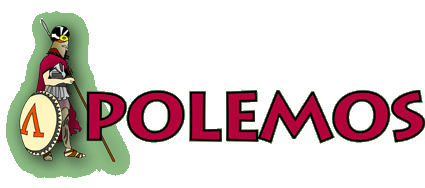
| Home | Painting Guide |
Sample Polemos English Civil War Army Lists
This section containstwo sample army lists for the period taken from the Polemos rules book.
Armies of the ECW were
not the same and their composition, experience and leadership varied widely.
Accordingly you will not find a ‘typical’ Parliamentarian
or Royalist army. The army lists provide a way of generating armies from
a number of different years and theatres of the ECW as well as a description
in Polemos terms of the armies present at some of the larger actions of
the war. These are interpretations in game terms – your interpretation
may differ.
Using the tables
The initial table in each section establishes the numbers of Brigades for each arm based upon a major battle from each year. Some of these such as the Edgehill and Naseby armies will require large number of bases. As a result we offer a choice of size of action ranging from Large to Small.
The subsequent tables use a D10 to determine the morale, strength and armament of Foot Brigades and the morale, strength and tactics of Horse Brigades. The number of dragoon bases in a brigade are the number of dismounted bases.
Key:
Bde
= Brigade
Arms
M = Mixed foot
PH = Pike heavy foot
SH = Shot heavy foot
S = Pure Shot
Tactics
T = Trotters
G = Gallopers
Morale
R = Raw
T = Trained
V = Veteran
E = Elite
Below the
tables is the historical composition of the relevant army at the chosen
action. This identifies the historical size of the army in Polemos terms,
the identity of the General and Officers and their characteristics. Where
possible the commander and composition of the brigades of horse and foot
are given. Unless otherwise stated, all officers are classed as Good and
Average. Armies are normally described with their left wing, centre and
then right wing. The listed brigades were not necessarily deployed in
that order in the command. The name of each Brigade (or brigade size formation)
are in plain text with the number of bases in parentheses (for example
Dalbier (2)). The names of any identified constituent regiments
are in italics. In some cases, especially with Horse, the ‘brigade’
is in fact a large regiment.
General information
on the appearance of the Foot is appended to each army list. Coat colours
are given only for a specific year when we have an appropriate written
source. Despite all our best efforts some of these sections are all too
brief! There was no equivalent to even this limited standardisation for
Horse.
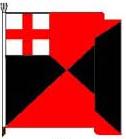 |
Oxford
Army – Newbury 1643 |
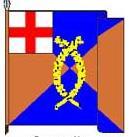 |
The entire army was better equipped than that of a year ago. However, muskets were still in short supply. Even more crucially, so was gunpowder. The battle could have been a much bigger success for the Royalists had it not been for the lack of powder available to them by the end of the action.
In this battle the Royalist army formed up without a left wing of Horse with Byron’s brigade placed in the centre. Should you wish to have a more conventional deployment then Wilmot be may be pressed into service as a wing commander
There were no dragoons or artillery in measurable or effective numbers.
(i) Random Composition
Arm |
Medium
Army |
Small
Army |
Horse |
5
Brigades |
3
Brigades |
| Foot |
4
Brigades |
2
Brigades |
FOOT |
1 |
2 |
3 |
4 |
5 |
6 |
7 |
8 |
9 |
10 |
Morale |
R |
R |
R |
R |
R |
T |
T |
T |
T |
T |
| Strength |
3 |
3 |
4 |
4 |
4 |
4 |
4 |
4 |
4 |
4 |
Arms |
M |
SH |
SH |
SH |
SH |
SH |
SH |
SH |
SH |
SH |
HORSE |
1 |
2 |
3 |
4 |
5 |
6 |
7 |
8 |
9 |
10 |
Morale |
R |
R |
R/E |
R/E |
T |
T |
T/E |
V |
V |
V/E |
| Strength |
2 |
2 |
3 |
4 |
4 |
5 |
5 |
5 |
5 |
5 |
Tactics |
G |
G |
G |
G |
G |
G |
G |
G |
G |
G |
(ii) Historical Basis: Medium Army
Overall Command – Charles I Stuart (Poor)
Centre – Patrick Ruthven, Lord Forth
| Foot | Gerard* (4) (Lord General, River, Molyneux, Gerard, Dutton, Owen) |
| Belasyse* (4) (Belasyse, Stradling, Henry Lunsford, Lloyd, Astley Fitton, R.Herbert, Bolle) | |
| Byron (4) (Lifeguard, C.Gerard, Pinchbeck, Percy, Blackwell, Tyldeseley, Eure, Darcy, Vaughn) | |
| Vavasour (4) (Vavasour, Prince Charles, Sandys, Herbert) | |
| Horse | Byron (4) |
*The regimental make up of these brigades is conjectural.
Right Wing – Prince Rupert (Good))
| Horse | Rupert (5); Wilmot (5); Caernorvan (5); C.Gerard (5) |
(iii) Coat Colours
Once again the information is unclear. We are informed that some regiments received issues of red and some of blue clothes (coat, breeches and monteros). Unfortunately we don’t know which regiments got what. What we do know is that Darcy’s, Charles Gerard’s and Lunsford’s/Rupert’s were dressed in blue. The Lifeguard may have had red. It is also possible that Percy’s, Pinchbeck’s, Dyve’s and Pennyman’s may have had white/grey coats as they were all northern regiments.
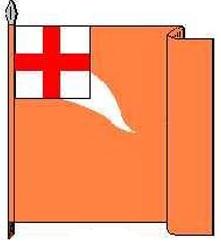 |
Essex's
Army – Newbury 1643 |
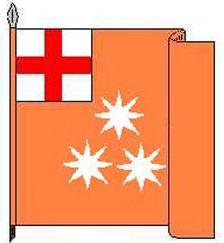 |
The Earl of Essex found himself with a much depleted and diminished number of foot soldiers. Only 12 of the original regiments remained intact and many of these were under-strength. In order to bolster the army Essex was granted the use of a City Brigade of five London Trained Band regiments. There were [negligible] numbers of dragoons and [only] light guns.
(i) Random Composition
Arm |
Medium
Army |
Small
Army |
Horse |
8
Brigades |
4
Brigades |
| Foot |
4
Brigades |
2
Brigades |
| Trained Bands | 5
Brigades |
2
Brigades |
FOOT |
1 |
2 |
3 |
4 |
5 |
6 |
7 |
8 |
9 |
10 |
Morale |
R |
R |
T |
T |
T |
T |
T |
T |
V |
V |
| Strength |
3 |
3 |
3 |
3 |
3 |
3 |
3 |
3 |
4 |
4 |
Arms |
M |
SH |
SH |
SH |
SH |
SH |
SH |
SH |
SH |
SH |
TRAINED
BANDS |
1 |
2 |
3 |
4 |
5 |
6 |
7 |
8 |
9 |
10 |
Morale |
R |
R |
R |
R |
R |
T |
T |
T |
T |
T |
| Strength |
2 |
2 |
2 |
2 |
2 |
2 |
2 |
2 |
2 |
2 |
Arms |
M |
SH |
SH |
SH |
SH |
SH |
SH |
SH |
SH |
SH |
HORSE |
1 |
2 |
3 |
4 |
5 |
6 |
7 |
8 |
9 |
10 |
Morale |
R |
R |
T |
T |
T |
T |
T |
T |
V |
V |
| Strength |
2 |
2 |
2 |
2 |
3 |
3 |
3 |
3 |
4 |
4 |
Tactics |
T |
T |
T |
T |
T |
T |
T |
T |
T |
T |
One Brigade of two bases may be designated as Cuirassiers.
(ii) Historical Basis – Medium Army
Overall Command
– The Earl of Essex
General of Horse – Sir William Balfour (Good)
Left Wing – Colonel John Middleton
| Horse* | Middleton (2); Goodwin (2); Sheffield (2); Ramsey (2): Dalbier (2) |
* The attribution of these regiments to brigades is conjectural.
Centre
| Foot* | Robartes (3) (Robartes, Tyrell, Langham) |
| Skippon (2) (Skippon, Bulstrode, Constable) | |
| Barclay (2) (Barclay, Holmstead, Thompson) | |
| Holbourne (3) (Holbourne, Earl of Essex, Martin) | |
| LTB Foot** Red (2); Blue (2); Blue Auxiliaries (2); Orange Auxiliaries (2) |
*The regiments are accurate their allocation to brigades is conjectural.
** The London Trained Bands are regiments each divided into two battalia because of their large size.
Right Wing – Sir Philip Stapleton
| Horse | Lord General’s (3); Balfour’s (3); Behres’s (2); Meldrum’s (2) |
(iii)
Coat Colours
The clarity of the 1642 issue disappears in 1643. We know that red and
grey coats were used to clothe the Foot, but no idea as to which regiments
received which colour. It is all too possible that both colours could
be seen in the same unit.
The Trained Bands were not uniformed, and all would have taken the field in their civilian clothes. The members of the Red and Blue regiments were recruited from a higher social class than the auxiliaries. Large numbers of their rank and file would have sported buff coats thus giving them a degree of uniformity.